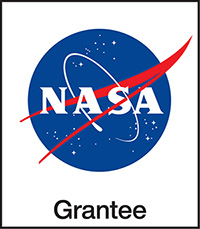7. Sum It Up: Science Share-Out
Learners recommend a water reservoir to explore.
Setup: Prep Time 5 min.
*See Materials & Preparation in the Educator Guide linked above for full info.
Context-Setting Video
Why Does NASA Want to Explore Jupiter’s Ocean Moon?
21st Century Skills
- Communication
Science Practices
- Engaging in Argument from Evidence
- Constructing Explanations
- Communicating Information
Learners Will Do
- Share their selected reservoirs and explain why they want to explore them.
Learners Will Know
- Scientists have valuable knowledge to share about their findings and decisions.
Connecting Across Activities
- Activity 6: Choose a Potential Water Reservoir to Explore: Last time, learners combined what they have learned to propose an extraterrestrial water reservoir to explore for life.
- Activity 7: Science Share-Out: Today, learners recommend a water reservoir to explore.
- Engineering Pathway: Next time, learners experience water reuse engineering in the PLANETS Water in Extreme Environments Engineering Pathway (optional).
Set up a device with a projector and internet access, then test video links and view: Why Does NASA Want to Explore Jupiter’s Ocean Moon?
Related Video
Water and Habitability

